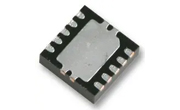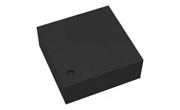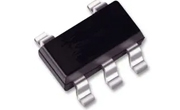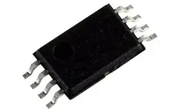How to choose the right industrial battery charger PMIC
Battery charger ICs ensure your batteries charge safely and work reliably, whether you're powering phones or factory equipment.
You must choose the charger that best suits your needs. Selecting the correct industrial battery charger Power Management Integrated Circuit (PMIC) can be difficult with so many available options. In this article, we'll guide you through the key considerations for choosing the perfect solution for your application. We will focus on key factors like battery chemistry, input voltage range, the charging current, and how the system manages the power path.
Understand your battery chemistry
Different batteries need different kinds of charging to work their best. To ensure safe and efficient operation, select a charger IC compatible with your battery chemistry.
- Lithium-Ion (Li-Ion) batteries: Known for their high energy density (150–250 Wh/kg) and low self-discharge, Li-Ion batteries provide 3.6V per cell (4.2V when fully charged). Lightweight and efficient, they are ideal for portable devices, electric vehicles, and energy storage systems, offering durability through multiple charge cycles.
- Nickel-metal hydride (NiMH) batteries: With a moderate energy density (100–120 Wh/kg) and a nominal voltage 1.2V per cell, NiMH batteries are reliable for hybrid vehicles and consumer electronics. They feature temperature-based charging termination and deliver consistent power, although they have a higher self-discharge rate compared to Li-Ion batteries.
- Lead-Acid batteries: Operating at 2V per cell with an energy density of 30–50 Wh/kg, lead-acid batteries are cost-effective and widely used in automotive and backup power systems. They provide high surge currents for engine starts but have a shorter lifespan and higher weight compared to other types.
Evaluate input voltage and power requirements
The input voltage range of a battery charger IC must be compatible with various power sources, particularly with evolving USB standards like USB Type-C, which supports voltages from 5V up to 20V and up to 48V with Extended Power Range (EPR) specifications. A wide input range enables the charger IC to handle diverse power requirements, ensuring seamless operation across devices with single- or multi-cell batteries. For USB applications, backward compatibility with 5V is essential but may require complex topologies such as buck-boost converters, especially for systems exceeding 15W or using multiple cells.

Figure 1: ROHM’s BD71631QWZ features a wide charging range and supports a variety of rechargeable batteries
Charge current analysis: Linear vs Switching charger ICs
Portable power tools, laptops, and drones require much higher power than fitness trackers or wireless headphones. This wide variation in power demands makes choosing the correct battery charger topology essential. When selecting a battery charger IC, it's essential to understand the differences between linear and switching topologies to ensure flawless performance and efficiency for your application.
Linear charger IC: These are suitable for low-power applications where simplicity, compact design, and cost efficiency are priorities. These chargers use a pass transistor to reduce the input voltage to the battery voltage, requiring minimal external components like capacitors and resistors. They are ideal for charge currents of 500 mA or less, as their efficiency is proportional to the ratio of output to input voltage (VOUT/VIN). While they excel in applications with small batteries and low heat generation requirements, their efficiency and thermal performance degrade in high-current scenarios due to significant power dissipation. Linear chargers are best suited for consumer devices with small batteries, such as wearables, wireless sensors, and low-power IoT devices.

Figure 2: Block diagram of Linear and Switching Chargers
Switching charger IC: These ICs are designed for high-current applications requiring efficiency and flexibility. These chargers use high-side and low-side FETs to control an inductor, providing high efficiency by minimizing power loss, even at charge currents exceeding 1A. They are well-suited for systems with wide input voltage ranges and multi-chemistry battery support, such as Li-ion, LiFePO4, or lead-acid batteries. Although switching chargers require more components, including inductors and capacitors, their ability to handle higher charge currents with lower heat dissipation makes them indispensable for industrial, automotive, and portable applications like laptops, medical devices, and power tools. However, you must consider trade-offs, such as increased cost, noise generation, and board space. Switching chargers come in three types: buck (step-down) to lower voltage, boost (step-up) to increase voltage, and buck-boost to adjust voltage either up or down.

Figure 3: Various charger topologies
Charging profile consideration
The charging profile of a charger IC directly impacts battery health, performance, and lifespan. A good battery charger handles charging in two main steps. First, it carefully controls how much power flows to your battery. There is precise control over current and voltage during the constant current (CC) and constant voltage (CV) phases, ensuring efficient charging while avoiding overcharging or overheating. The voltage is kept steady to finish charging safely. Advanced charger ICs, like the NCP1850 from Onsemi, offer programmable profiles to support various battery chemistries and capacities.
The charging profile of a battery charger (as described in figure 4) IC defines the step-by-step process that ensures safe, efficient, and reliable charging, making it a critical factor in charger IC selection. Here’s how the charging stages work:
- Safe Charge: When a battery is empty, the charger operates in the safe charge state, supplying a low current (ISAFE) to charge system capacitors or the battery. Once the battery voltage exceeds the VSAFE threshold, the process transitions to preconditioning.
- Preconditioning (Pre-Charge): In this stage, the charger delivers a small current (IPRE) to the battery via the enabled DC-DC converter. This pre-charge stage protects the battery by gently raising its voltage until it surpasses the VPRE threshold, entering the constant current phase.
- Constant Current (Full Charge): During this phase, the charger delivers the programmed charge current (ICHG) to the load, shared between the battery and system. The DC-DC converter supplies sufficient power to charge the battery and support the system’s active operations.
- Constant Voltage (Full Charge): As the battery voltage approaches its maximum level (VCHG), the charger switches to constant voltage mode, causing the current to decrease gradually. The voltage is precisely controlled and can be adjusted through I2C, ensuring accurate charging and protecting the battery from overvoltage damage.
- End of Charge: Charging concludes when the battery voltage remains above the VRECHG threshold and the current drops below the end-of-charge level (IEOC). At this point, charging stops to prevent overcharging. The cycle resumes in constant current mode if the voltage falls below the VRECHG threshold. Both IEOC and manual charge halt features are configurable through the I2C interface.

Figure 4: Typical charging profile (NCP1850)
When picking a battery charger IC for fast charging, look for these key features. It should support high charging currents aligned with the battery's C-rating, with programmable pre-charge, constant current (CC), and constant voltage (CV) thresholds for precise fast charge control. Advanced current regulation and thermal management are critical to ensure reliability. The charger should also have scalable settings for different battery chemistries and efficient FET control for fast, safe, and optimized charging performance.
Power Path Management (PPM)
Power Path Management regulates how the charger handles input power, battery charge, and system load, helping to balance power distribution effectively. Selecting the right PPM solution for your application ensures optimal charger IC performance.
For basic systems, simple chargers without a power path directly connect the battery to the system, relying on the battery to reach a minimum voltage before the product powers up. The downside is that your device won't turn on until the battery has enough charge - which can be frustrating if the battery is completely dead.
On the other hand, systems with OR selection power path management provide more flexibility. External switches allow the charger IC to route power from the input source (VIN) or the battery (VBATT) to keep the system running, even if the battery is drained. However, this setup prevents the battery from providing extra current to the system, which may reduce efficiency in some scenarios.
A more advanced approach is Narrow-Voltage DC (NVDC) Power Path Management. It ensures the system powers up instantly, even with a low voltage, and allows the battery to supplement the system when input power is limited. NVDC allows for complete battery disconnection, making it ideal for shipping mode, over-current protection, and under-voltage protection. This makes your device more efficient and reliable, especially for portable devices where battery life matters most.

Figure 5: System voltage variation (VSYS) with maximum battery voltage (VBATT)
Essential safety features: Ensuring protection and compliance
A dependable battery charger IC must highlight safety and adhere to global industrial standards to ensure secure and efficient operation. Key features and compliance requirements include-
- Comprehensive Protection: Safeguards against over-voltage (OVP), under-voltage (UVP), over-current (OCP), short circuits (SCP), and reverse polarity.
- Temperature Monitoring: Ensures safe operation with IC and battery temperature protection, including compliance with JEITA standards.
- Safety Timers: Prevents prolonged charging cycles with customizable charge time limits and automatic resets for specific conditions.
- Optimized Charging Modes: Supports pre-charge, constant current (CC), floating charge, and constant voltage (CV) modes for safe and efficient charging.
- Global Certifications: Adheres to UL, CE, CSA, OSHA, and EMC standards for industrial and consumer safety.
Different battery charger PMICs and their applications
Conclusion
Battery charger ICs power portable and backup battery systems, making them a crucial part of modern life. They enhance safety and reliability by preventing battery failures, managing temperatures, and extending battery lifespans. Farnell offers a variety of battery charger ICs to support applications in industrial automation, medical devices, logistics, retail, backup systems, instrumentation, and energy harvesting.






















